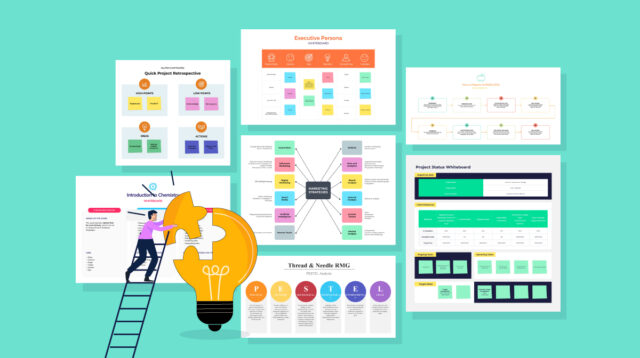
Are you struggling to create a product catalog that drives sales? You’re not alone! With the right design strategies, you can create an effective and attractive online catalog that increases conversions and encourages ongoing customer engagement.
In this article, we’ll share tips for creating an effective product catalog for your business.
Understanding Your Target Audience

Before beginning, you should develop a clear understanding of who your target audience is and what their needs may be. A well-crafted catalog should be tailored to the demographic it is being produced for, such as age, gender, or geography.
To learn more about your client’s preferences and needs, build relationships with customers and ask them questions about their likes, dislikes, and shopping habits. Talk with sales associates in-store or by phone for good insight into customer needs and preferences. They often talk with customers throughout their shopping experience and can offer knowledgeable perspectives on particular products that are popular or sell quickly.
Use surveys or focus groups in order to get a better handle on customer sentiment by asking questions such as “What do you think of our current catalog?” Knowing what customers like, dislike or are looking for can help you determine how to effectively design a product catalog that resonates with potential buyers. By understanding more about the demographic of your target audience, you can create an effective strategy that matches the right product with its intended buyer — which will lead to more sales conversions!
Choosing the Right Format

When it comes to creating a successful catalog, format can be as important as content. Depending on your market, size, and cost considerations, you may want to choose from varying sizes and shapes for your potential catalogs and that is why it’s important to hire the right Catalog Printing Services. Here are some of the most popular formats available:
Saddle-Stitched: A common choice for catalogs of 16-32 pages, this style folds open like a book and is secured with staples in the center. Its low cost makes it a great choice for smaller budgets.
Tabbed Binder Edition: This format allows readers to add or remove pages and still keep their catalog neat since pages are attached to rings inside an attractive binder cover. Clothing retailers often choose this style if they have a large variety of styles that they would like to update often.
Digest Size: Catalogs measuring 5-1/2″ x 8-1/2″ are perfect for dense product information or color photographs as well as for cost-effectiveness in postage charges.
People Magazine Style: These larger size magazines measuring 10″ x 10″ or bigger offer maximum impact at higher costs but may be necessary when showcasing luxurious items such as furniture or jewelry that require detailed photography layouts.
Large Format Posters: Oversized poster formats attract attention by offering the fullest use of high-resolution color photographs and clever design features without folding them into regular sizes. They tend to have greater durability than other paper formats and can be framed or hung up on walls in stores or homes.
Creating an Effective Layout and Color Scheme

Here are some tips for creating the perfect layout:
Start with a basic template – Choose a template that reflects the vibe or theme of your business. A good catalog should be visually dynamic and balanced, so pay close attention to margins, whitespace, font sizes, and hierarchy when laying out content.
Add features – Include features like infographics or illustrations to break up text-heavy pages; images should be relevant to the topic/product they are illustrating. Also, consider adding page numbers and a table of contents if the catalog is substantial in length.
Arrange items – Organize products into categories on each page, with a featured product in the center of each spread. Be sure to communicate product capabilities; add relevant use cases if possible. Additionally, place calls to action at strategic locations throughout your layout to maximize customer engagement with premium items or offers that may otherwise be overlooked.
Incorporate Color – Color plays an important role in presenting visual cues about what products you’re promoting and how to interact with them – select colors wisely! Consider hues and shades that complement one another for maximum effect. If needed, create a color palette cheat sheet with all the shades you’ll be using throughout your design process so you can easily replicate and edit their look as needed over time.
Optimizing Your Catalog for Search Engines

Here are some strategies you can employ when designing a catalog that sells:
Use relevant keywords throughout the content of your catalog: Strategically use keywords that accurately describe the items featured in your catalog. Make sure they appear naturally in the descriptions and titles, but avoid keyword stuffing as this can have a negative effect on search engine rankings.
Break up long-form content into smaller chunks: Long pages of content can be off-putting to customers who just want to quickly scan and find what they are looking for. Break up content into shorter, easier-to-read sections and include visuals such as images, charts, or illustrations.
Utilize internal links to other product pages: Internal links within your site allow visitors to easily navigate from one product page to another without leaving the website completely. Think about what related products or categories would be beneficial to those interested in a certain item and link those entries to encourage further exploration of your site’s offerings.
Increase link building on outside sites: Link building means generating quality backlinks from authoritative websites back to yours which will further enhance your search engine rankings and user experience onsite by directing them to additional information or useful buying guides or resources related to specific products featured on corresponding pages in your catalog.
Conclusion
When designed and implemented correctly, a catalog can be a powerful marketing tool. By following the tips and strategies outlined in this article, you should now have the knowledge to design your own catalog that will draw customers in and encourage them to buy from you.
Remember to create eye-catching visuals, use persuasive language, take advantage of digital tools for personalization, and pay attention to data analytics before printing your final version. With these steps taken into consideration, you are sure to produce an effective catalog that generates sales!







